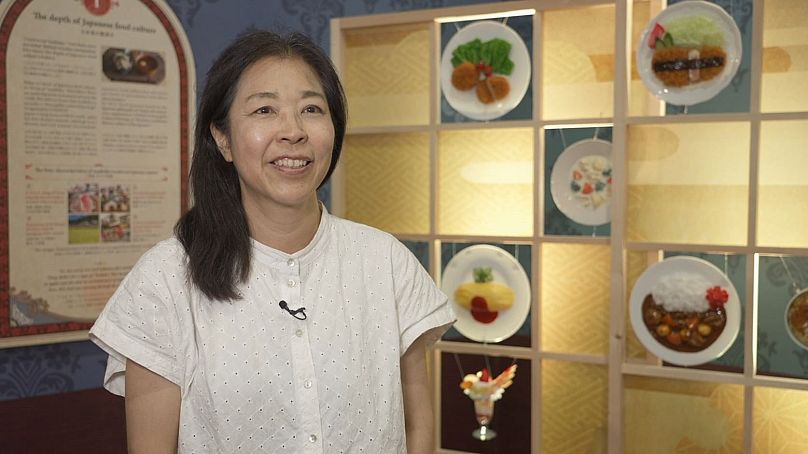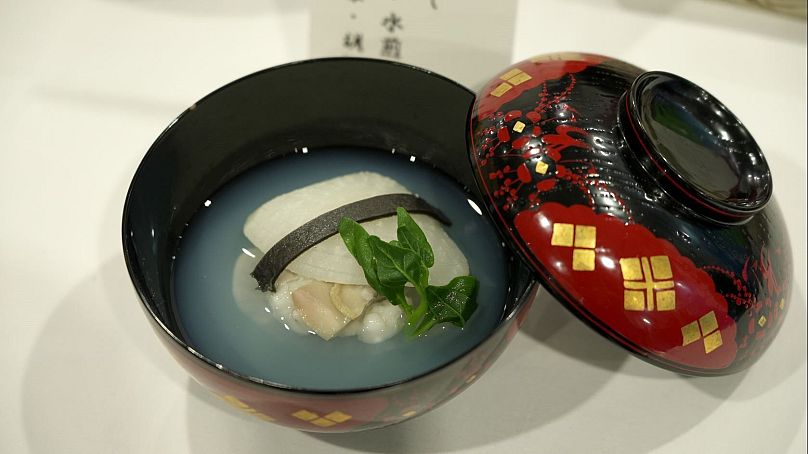In the buzzing crowd at Expo 2025 in Osaka a small line is starting to form, curling around the Tasty Japan food stall. The rumour that rice-guru Sumidaya Shoten is about to serve up some ‘curry rice’ samples is quickly confirmed as a trolley laden with spoonfuls of thick sauce and sticky white rice emerges from behind the scenes. I manage to secure a spoonful, and it’s just as brightly spiced and satisfyingly tangy as everyone had promised.
As the samples are savoured there’s time to reflect on the fact that this cherished Japanese national dish actually owes its origins to Indian food-loving English sailors arriving on their shores. In fact, curry rice is a perfect example of Yōshoku, Japanese fusion cuisine that simmers local tastes with culinary influences from around the world.
Now, the Japanese government is keen to share these Yōshoku dishes with a wider audience, and the Expo 2025 event is part of an effort to explain the history of these recipes and why they hold a special place in the hearts of Japanese people.
Food researcher Yuriko Aoki argues that ancient Japanese cuisine based on vegetables, fish, and rice was almost ‘too healthy’ before it began to incorporate Western influences. For many centuries it was forbidden for the Japanese to eat meat, and local cuisine ‘did not contain enough nutrition’, she explains. Long isolated from the rest of the world, her countrymen realised that they were often physically shorter than Dutch or Portuguese visitors, and so the move towards eating more pork and beef began to take hold in the early 20th Century.
A perfect example of Yōshoku is Tonkatsu, a thick cutlet of pork, deep-fried and served with shredded cabbage and Worcestershire sauce, plus a bowl of short grain Japanese rice. Tonkatsu is a common sight in school and workplace canteens, and its name drops a heavy hint to its fusion cuisine past, as the word ‘ton’ means pork, and ‘katsu’ is a Japanese version of the Franco-British words ‘cutlet’ and ‘côtelette’.
Since then, different regions of Japan have created their own varieties of Tonkatsu, either switching to a veal cutlet, or the Miso Katsu, served with a miso sauce. I’m not alone in enjoying these specialties, either, as a recent survey found that 42% of foreign visitors had eaten Tonkatsu during their trip to Japan.
What’s more, according to JFOODO, the Japan Food Product Overseas Promotion Center, the number of Japanese restaurants worldwide is now over 180,000, a figure which has grown threefold in the past decade.
The country’s wider culinary traditions are also gaining influence in some of the highest-quality restaurants around the globe, with the focus on high-quality and sustainably-sourced ingredients plus low-fat recipes chiming with both chefs and their customers.
A panel of Michelin-starred chefs at Expo 2025 revealed some of the latest ideas for weaving Japanese food concepts into local dishes. Kyle Connaughton, the chef from SingleThread Farm on the west coast of America explained to the audience how he was inspired by the traditional Japanese takiawase vegetable soup to create a Californian salad-style version using home-grown red and green manganchi peppers.
Meanwhile Mauro Calogreco, the Argentinian chef at the Mirazur restaurant in the south of France described a new recipe for duck with red seaweed and red shiso, an aromatic herb that’s described as tasting half-way between mint and basil.
Thai chef Chaudaree ‘Tam’ Debhakam from the Baan Tepa restaurant in Bangkok explained how she is now pairing rare Japanese Noto beef with what she describes as a ‘blackened’ Thai curry that compliments the rich flavour of the fatty meat. The addition of Thai tropical fruits and Thai jasmine rice cooked in Japanese bamboo leaves completes a perfect fusion dish.
Looking ahead, all of the chefs at the Expo 2025 panel debate underlined the need to consume sustainably sourced ingredients. Chef Yoshihiro Murata from the iconic Kikunoi restaurant in Kyoto also advocated for a reduced intake of animal proteins in general, telling the crowd: “We all need to think about balance, and produce vegetables and make dishes with vegetables. I think it is a good idea to make a dish in which vegetables make up more than half of the entire course.”
At the heart of all of these recipes is the freshness and taste of the ingredients. Japanese cuisine gives great emphasis to the pure flavour of herbs, vegetables, seafood, fish and meat, offering them a chance to stand alone on the plate and the palate.
To support them, you’ll always find a bowl of plump Japanese rice. Food researcher Yuriko Aoki says that this humble crop carefully cultivated across the archipelago is actually her favourite Japanese speciality. “New rice can be eaten with just a dash of salt, it’s delicious enough on its own,” she smiles.








